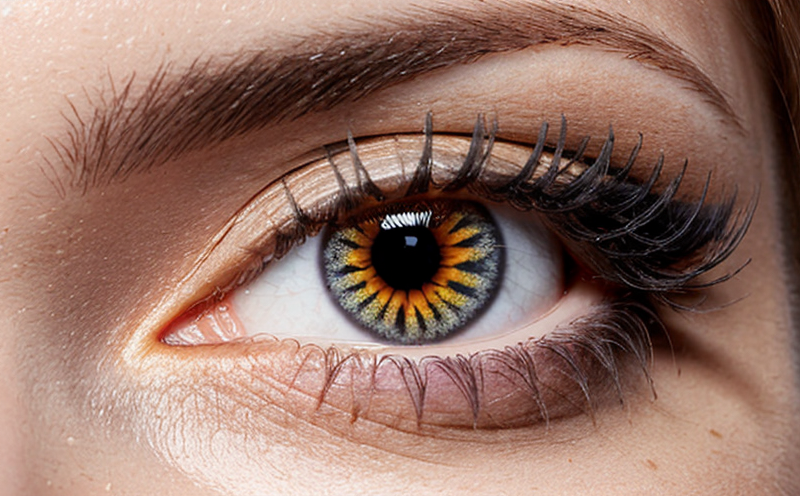Ocular Safety Testing for Hybrid Eye Makeup Formulations
Hybrid eye makeup formulations present a unique challenge in cosmetics testing. These products combine traditional cosmetic ingredients with novel materials, often resulting in complex and multifunctional formulas. Ensuring the safety of these products is paramount to both consumer protection and brand reputation.
The ocular safety assessment for hybrid eye makeup involves several steps that are critical to ensuring the product's compatibility with the delicate ocular surface. The testing process typically includes an initial evaluation of raw materials, followed by a series of in vitro and in vivo assessments designed to predict potential adverse effects on the eyes.
One common approach is the use of the rabbit corneal irritation test (CIT) as per ISO 10993-11. This test evaluates the irritancy potential of the formulation by applying a sample to intact rabbit corneas and observing for signs of inflammation or damage over time. However, due to ethical concerns and regulatory requirements, alternative methods are increasingly being used.
Alternative methods include the use of human reconstructed skin equivalents (RSEs) as per ISO 10993-17, which can provide a more relevant predictive model for ocular irritation. Additionally, in vitro tests using cell lines like the Human Eye Irritation Test (HEIT), based on EN ISO 21486:2005, offer a faster and more humane alternative.
For hybrid formulations that include active ingredients or novel materials, additional testing may be required. For instance, if the product contains nanoparticles, specific tests such as the zeta potential measurement and size distribution analysis are necessary to ensure stability and safety. These tests help determine whether the particles are likely to cause adverse effects upon contact with ocular tissue.
The testing process also involves careful specimen preparation. This includes ensuring that the sample is representative of the final product, which may require adjustments in concentration or formulation based on initial assessments. The choice of test method will depend on the specific ingredients and expected use of the product. For example, products designed for prolonged wear might undergo accelerated stability testing to ensure they remain safe over extended periods.
Once the testing is complete, the results are analyzed comprehensively to determine whether the product meets all safety criteria. Reporting typically includes a detailed summary of test methods used, observed effects, and conclusions drawn from the data. Compliance with international standards such as ISO 10993-24 ensures that the testing process adheres to recognized protocols.
In conclusion, ocular safety testing for hybrid eye makeup formulations is a multifaceted process that requires expertise in both cosmetic formulation and toxicology. By using advanced testing methods and adhering to international standards, laboratories can provide reliable data that supports safe product development and regulatory compliance.
Applied Standards
| Standard | Description |
|---|---|
| ISO 10993-11 | Rabbit corneal irritation test for ocular products. |
| ISO 10993-17 | Human reconstructed skin equivalents for ocular products. |
| EN ISO 21486:2005 | Human Eye Irritation Test using cell lines. |
| ISO 10993-24 | Guidelines for biocompatibility assessment of medical devices and products. |
Customer Impact and Satisfaction
The demand for safe and effective cosmetics is growing, driven by increasing consumer awareness about product safety. By offering comprehensive ocular safety testing services, laboratories like ours are helping brands meet this demand. Our clients benefit from a transparent and reliable testing process that ensures their products comply with international standards.
Customer satisfaction comes not only from the quality of our tests but also from our commitment to providing clear, actionable reports. We work closely with each client throughout the testing process, offering insights into potential issues and suggesting improvements where necessary. This collaborative approach helps ensure that our clients are well-informed and confident in their product safety.
Our focus on customer satisfaction is further enhanced by our state-of-the-art facilities and highly skilled technicians. We use cutting-edge equipment to conduct tests, ensuring the highest level of accuracy and reliability. Our customers trust us to deliver results that they can rely on for regulatory submissions and internal quality control.
Environmental and Sustainability Contributions
- Use of alternative test methods reduces the number of animal tests required.
- Incorporation of RSEs in testing helps minimize the use of live animals.
- Adherence to ISO 10993 standards ensures efficient and ethical practices.
The shift towards alternative test methods for ocular safety is not only beneficial for animal welfare but also contributes positively to environmental sustainability. By reducing the reliance on traditional animal testing, we are helping to decrease the overall carbon footprint associated with cosmetics development. Additionally, our commitment to using advanced technology ensures that we operate efficiently and responsibly.





